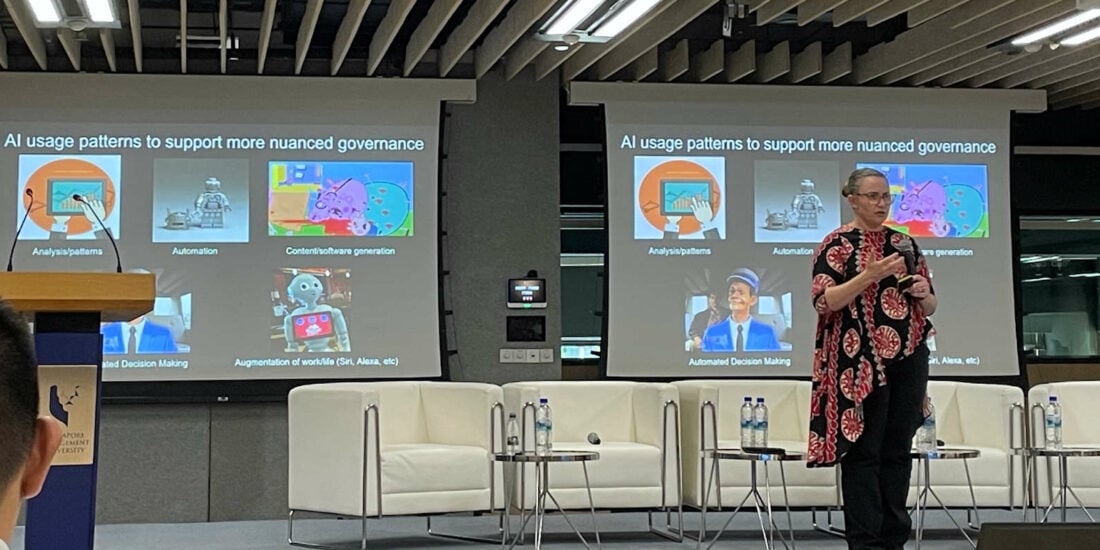
Legal Skills Training: A Call to Action
Taking legal training and education to the next level: A case for enhanced academia-practitioner collaboration
Calls for reforms to legal education and training are not new. Much of the debate has been over whether legal education and training is fit for purpose in ensuring that legal professionals are practice ready. Increasingly the spotlight is being cast on the legal educator’s role and utility against the changing realities of the practice and business of law. Law schools have been the primary providers of legal education but there is increasing participation from continuing legal education training providers and paralegal training providers in shaping the legal profession. Ideas for collaboration between academia and legal professionals towards ensuring that legal education remains relevant are presented here.
It takes a “village”1“It takes a village to raise a child” is an African proverb which means that it takes an entire community of different people interacting with children in order for a child to experience and grow in the environment.(Wikipedia) to train a “practice ready” legal professional2In the context of this article, the term “legal professionals” includes lawyers, in-house counsels and paralegals, working in various settings including private practice, companies, government legal departments and the courts.. This is the mantra amongst legal academia. In view of this, should Institutions of Higher Learning3Universities and polytechnics. and Formal Training Providers4Singapore Institute of Legal Education (SILE) & Singapore Academy of Law (SAL) be the only ones tasked with training a competent, practice ready legal professional? We suggest that the answer is “no” and that the legal profession has an equally important role in providing expertise and opportunities in moulding a competent, practice ready legal professional.
Who is a “competent practice ready” legal professional? Competence could be defined as “attitudes, values, and work habits critical to the individual’s ability to translate knowledge and relevant skills into adequate professional performance.”5Section of Legal Educ. and Admissions to the Bar, AM. Bar Ass’n, Report and Recommendations of the Task Force on Lawyer Competency: The Role of Law Schools vii (1979) (hereinafter “Cramton Report”) (the chair of the task force was Dean Roger Cramton). Traditionally, for a legal practitioner, competence would be equated to core legal skills i.e. “thinking like a lawyer” and “performing like a lawyer”.
However, with technology, demographics, globalisation and business trends recasting traditional models of legal practice and the business of law, the components of competence i.e. “attitude”, “values” and “work habits” assume a wider definition. What this wider definition entails was much debated at the 13th Global Legal Skills Conference (GLSC) at Melbourne Law School in December 2018. The training of competent practice ready legal professionals and how legal skills training should be aligned to achieve this was a prime concern and several academics emphasised the need for developing mindsets, personality and dispositional traits, which go beyond core legal skills.
For a better understanding of how this can be achieved, education reform experiences from other disciplines are worth studying as a source of learning for law training designers, educators and policy makers. In the United States, engineering education went through a similar introspective phase about the readiness of engineering graduates to take on problems of practice and workplace readiness.6Braha, D., & Maimon, O. (1997). The design process: Properties, paradigms, and structure. IEEE Transactions on Systems, Man, and Cybernetics-Part A: Systems and Humans, 27, 146-166. doi:10.1109/3468.554679http://necsi.edu/affiliates/braha/IEEE_TSMC_Design_Process.pdf Existing literature captures the experience of engineering professionals both from academia and the industry collaborating towards improvement of formal courses, imbuing real problems along with real-world expertise, to the advantage of engineering graduates and their employers.7Bright, A. (1994). Teaching and learning in the engineering clinic program at Harvey Mudd College. Journal of Engineering Education, 83, 113-116; Dutson, A. J., Todd, R. H., Magleby, S. P., & Sorensen, C. D. (1997). A review of lit erature on teaching design through project-oriented capstone courses. Journal of Engineering Education, 76, 17- 28.; Todd, R., & Magleby, S. (2004). Evaluation and rewards for faculty involved in engineering design education. International Journal of Engineering, 20, 333-340.
In the context of training “practice ready” paralegals and to understand the shifting expectations of employers and the skills required of our graduates, the authors reached out to a segment of the legal profession, which included legal practitioners, in-house counsel from private and public sector entities as well as judicial officers from the courts and the Community Justice Centre. The outreach was part of a pilot study that was undertaken between April to October 2018 to gauge the efficacy of the Diploma in Law & Management (LAW) at Temasek Polytechnic (TP) in preparing paralegals for the world of work.
The feedback received was that TP paralegals are generally workplace ready due to the skills-based training they receive. However, several respondents conveyed that more could be done in equipping paralegals with competencies to better prepare them to operate in the fast-changing workplace. Such a realization prompted several questions:
- What skills should paralegals be equipped with?
- How can the curriculum be best optimised to teach new skills without diluting the teaching of legal domain knowledge and skills?
- Should educational institutions and training providers bear the sole responsibility of producing competent, practice ready professionals/ para-professionals? If not,
- How can educational institutions better engage the legal profession in this?
At this juncture, we would like to acknowledge the contributions made by the legal profession over the years as our valuable “partner in education” in providing guest lectures, internship positions, book prizes and pro bono volunteering opportunities for TP LAW students. Special mention is made of the “onsite tutorials” and “simulation-based learning” which were conducted previously at the Intellectual Property Office of Singapore (IPOS) and at the Technology Courts. Such training helped our students be acquainted with online processes and court procedures. We hope that these and similar workplace training with other institutions can become the norm.
To enhance collaboration towards legal education reform in Singapore, we propose the following three-point agenda for the legal profession, fellow law academics and researchers to consider:
1. Breaking the Silos8“A Response to LawProfBlawg’s Plea for Legal Academicians to Answer “Why”? https://www.linkedin.com/pulse/response-lawprofblawgs-plea-legal-academicians-answer-kenneth-grady/
Law academics and researchers should increase current interaction and work more with legal professionals, consultants, entrepreneurs and clients on real world problems in law and the delivery of legal services. This inter-professional collaboration is essential in providing graduates with holistic training. In support of this proposition, Prof Kenneth Grady, an American law professor with an interest in legal education reform, makes an important point: “Academics have time, access to certain resources, and plenty of brain power. The legal industry needs those assets trained on the vast number of problems it has created and which it is now confronting. Articles on esoteric theories don’t help much”.
The proposition made is that the engagement between academia and practitioners must be action based. The role of academics is not limited to the “supply side” of the equation i.e. to produce graduates for the work place and to contribute to research. Competing demands of what are considered “core” activities for academics i.e. teaching, research, administrative and outreach duties mean that a premium is placed on time that academics may otherwise be willing to spend on curricular innovation. However, institutional and industry recognition of efforts to remake legal curriculum can help draw more academic attention and effort in this new area, which is perhaps as important as teaching and research. Likewise, the role of the legal profession is not to be viewed purely from the “demand” side i.e. not only as employers of graduates but as system actors in the training of work ready professionals and para-professionals.
2. Curriculum Review Inputs
A good starting point for law academics and practitioners to come together relates to discussions on law curriculum review. Historically, law curricula have been based on models that are devoted to doctrinal knowledge, where law students apply legal theoretical principles to problems of legal practice. Arguably, this practice produces law graduates with solid theoretical grounding but who may be inadequately equipped to “hit the ground running” when entering legal practice.
Legal professional associations and experts in learning theory and education will also feature in any curriculum review. Roundtables, conferences and dialogue sessions where the academia meets the practitioners are a good starting point for exchange of ideas to foster incremental/piecemeal curricular reform, but perhaps something more than just incremental change to the teaching of law is needed.
Ideally, a unified partnership approach towards legal curricular reform is required. To this end, legal education, legal practice and legal industry policy makers can consider forming a “Practitioner Circle” to engage in dialogue, research and reflection with a unified aim of bringing about curricular reform. Such networks which are concerned with both inquiry and implementation are not uncommon in other disciplines. They also function as a space for generating insights, analyses of or different perspectives for looking at a problem or testing out a hypothesis or approach.9Amelia Petersen (2016) Getting “What Works” working: building blocks for the integration of experimental and improvement science, International Journal of Research & Method in Education, 39:3, 299-313.
3. Work Integrated Learning
In Singapore as in other developed nations, the debate about the role of universities and whether longstanding university models are fit for purpose is increasingly becoming louder. Fuelling this debate are expectations from employers and society in general that “a core aspect of University’s role is to prepare students to transition into the workforce with generic graduate capabilities. These include being able to recognise and mitigate potential risks, solve problems effectively, and manage diversity and ambiguity.”10“Work Integrated Learning: why is it increasing and who benefits?” https://theconversation.com/work-integrated-learning-why-is-it-increasing-and-who-benefits-93642
The authors, based on our continued engagement with Australian academics and education institutions, propose co-development of Work Integrated Learning (WIL), a strategy which has been adopted widely by Australian employers and education instructors11Supra n 3. Moves in this direction are evident in Singapore too. Versions of “Earn and Learn” programmes being rolled out at the Institutes of Technical Education (ITEs), polytechnics and universities. WIL programmes are perhaps a smaller scale version of “Earn and Learn” programmes, making them easier to plan and implement.
The idea of WIL is not simply to replace classroom time with structured internships, but to get students to work in order to learn and in the process improve their capacity to “learning to work”.12Supra n 3 Through WIL, students should be exposed and immersed in “disciplinary practice” by observing and emulating discipline practitioners which should involve thinking like a practitioner, doing like a practitioner when faced with workplace tasks. WIL goes beyond just linear application of content knowledge; it is about helping learners acquaint themselves with mind-sets, personality and dispositional traits of practitioners.
The above proposals require academia and the legal profession to adjust their mind-set about their respective roles and identities. This may require time and effort to achieve as compared with building an awareness of global and societal changes, technological disruptions and the need for graduates to be equipped with inter-professional competencies, all of which will impact legal training, the role and business of law and the delivery of legal services.
Academia and legal professionals need to be adept at developing innovative strategies and be in tune with broader changes in how legal services will be rendered, how business of law will be done and how technology permeates and affects even the most private aspects of our lives. However, this article is not about such macro changes. The authors intend to focus on just one aspect: re-thinking legal education and training in the light of such macro changes. The challenge for all system actors is translating talk to meaningful action and action to positive outcomes.
Endnotes
| ↑1 | “It takes a village to raise a child” is an African proverb which means that it takes an entire community of different people interacting with children in order for a child to experience and grow in the environment.(Wikipedia) |
|---|---|
| ↑2 | In the context of this article, the term “legal professionals” includes lawyers, in-house counsels and paralegals, working in various settings including private practice, companies, government legal departments and the courts. |
| ↑3 | Universities and polytechnics. |
| ↑4 | Singapore Institute of Legal Education (SILE) & Singapore Academy of Law (SAL) |
| ↑5 | Section of Legal Educ. and Admissions to the Bar, AM. Bar Ass’n, Report and Recommendations of the Task Force on Lawyer Competency: The Role of Law Schools vii (1979) (hereinafter “Cramton Report”) (the chair of the task force was Dean Roger Cramton). |
| ↑6 | Braha, D., & Maimon, O. (1997). The design process: Properties, paradigms, and structure. IEEE Transactions on Systems, Man, and Cybernetics-Part A: Systems and Humans, 27, 146-166. doi:10.1109/3468.554679http://necsi.edu/affiliates/braha/IEEE_TSMC_Design_Process.pdf |
| ↑7 | Bright, A. (1994). Teaching and learning in the engineering clinic program at Harvey Mudd College. Journal of Engineering Education, 83, 113-116; Dutson, A. J., Todd, R. H., Magleby, S. P., & Sorensen, C. D. (1997). A review of lit erature on teaching design through project-oriented capstone courses. Journal of Engineering Education, 76, 17- 28.; Todd, R., & Magleby, S. (2004). Evaluation and rewards for faculty involved in engineering design education. International Journal of Engineering, 20, 333-340. |
| ↑8 | “A Response to LawProfBlawg’s Plea for Legal Academicians to Answer “Why”? https://www.linkedin.com/pulse/response-lawprofblawgs-plea-legal-academicians-answer-kenneth-grady/ |
| ↑9 | Amelia Petersen (2016) Getting “What Works” working: building blocks for the integration of experimental and improvement science, International Journal of Research & Method in Education, 39:3, 299-313. |
| ↑10 | “Work Integrated Learning: why is it increasing and who benefits?” https://theconversation.com/work-integrated-learning-why-is-it-increasing-and-who-benefits-93642 |
| ↑11 | Supra n 3 |
| ↑12 | Supra n 3 |






